
In 1999, the first version of what we know as the ‘Dream Act’ was drafted but not introduced. It wasn’t until 2001 when Representative Luis Gutierrez introduced the “Immigrant Children’s Educational Advancement and Dropout Prevention Act of 2001″—the first version of the ‘Dream Act’ to be introduced.
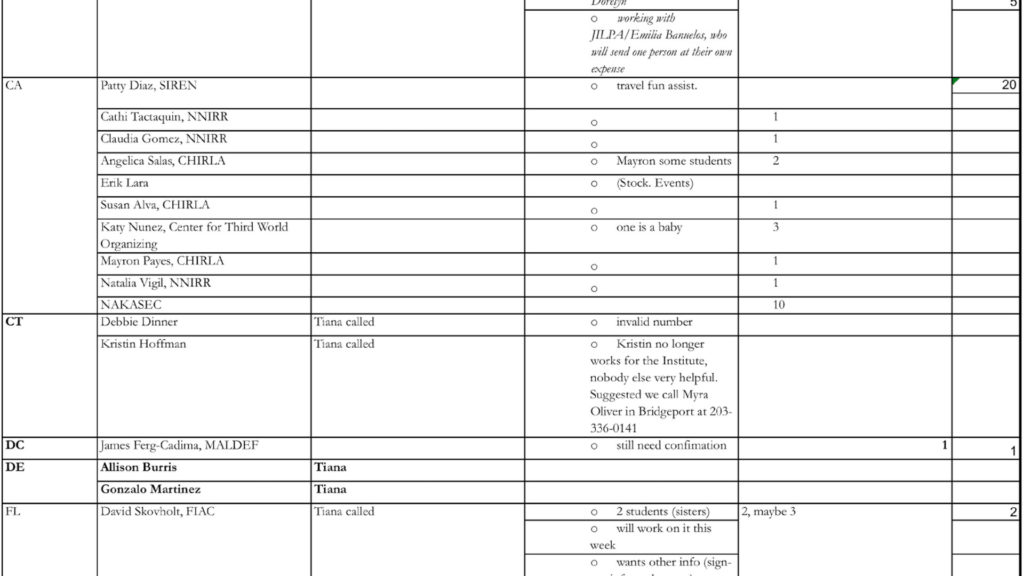
It began as an idea, a chant, a banner, a statewide tour, a conference call—a shared theory: if we all unite and dream big, everything will be possible.
Since the early 2000s, the fight to expand immigrant youth’s access to legal status and higher education produced a steadily growing stream of immigrant youth activists who have become politically engaged through high school and campus organizations, national coalitions, internet blogs, and youth projects within immigrant rights organizations.
In 2002, four east Phoenix students facing deportation after trying to cross the U.S.-Canadian border held a rally in the shadows of the U.S. Capitol, joined by about 200 other students, as they demanded for the DREAM Act.
Youth organizing for access to legal status and higher education provided a stepping stone for immigrant youth to become politically active, to gain exposure to different streams of social justice work, and to share responsibility for building a movement based on principles of social inclusion and justice.
Our names were hidden.
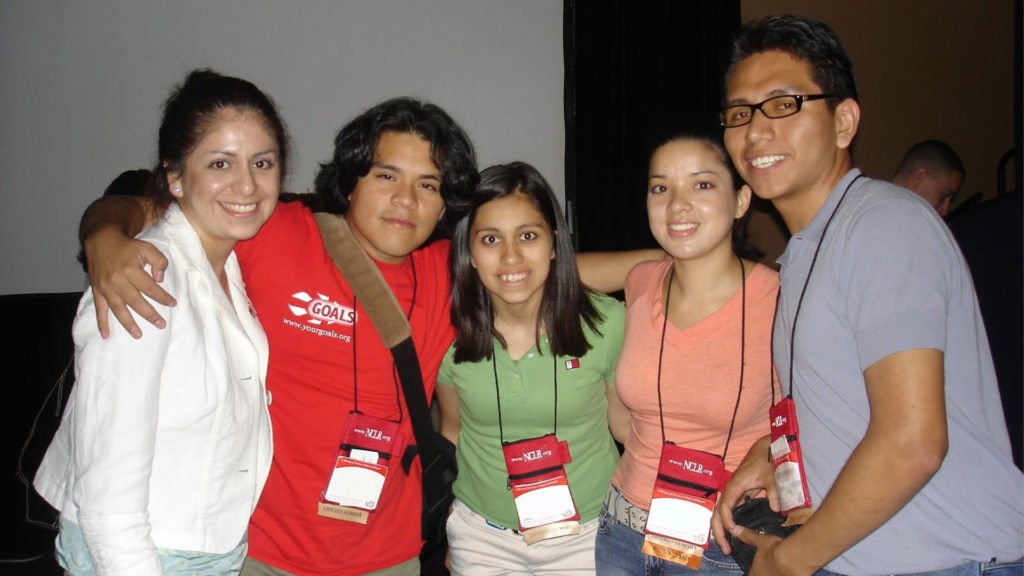
In 2005, after years of student organizing with the goal of achieving higher education access and legalization, immigrant student groups started to emerge in states across the country. The New York State Youth Leadership Council, The Student Immigrant Movement in MA, The University Leadership Initiative in Austin, TX, and the California Dream Network were the undocumented student organizations that started building a strong presence in those states. Those institutions and its leaders laid the foundation for the national network we call today United We Dream.
In that same year, the deportation of Marie Gonzalez and her parents–a family from Missouri–went public. With the launch of the We Are Marie campaign, immigrant youth began to build leadership around the country to fight against the early phases of deportation under the Bush Administration in 2005. Marie’s deportation case was won, even though her parents were not able to remain in the country. However, immigrant youth leaders used the high impact of the We Are Marie campaign to highlight other local stories of immigrant youth and their families facing deportation
Part of these efforts included the We Are Kamal campaign in New York, which fought against the deportation of a Muslim immigrant and his siblings, who had been placed in deportation proceedings following the Special Registration program that the Bush Administration mandated for all Muslim, Arab, and South Asian men after 9/11. This was the foundation for a campaign that later became known as Education Not Deportation.
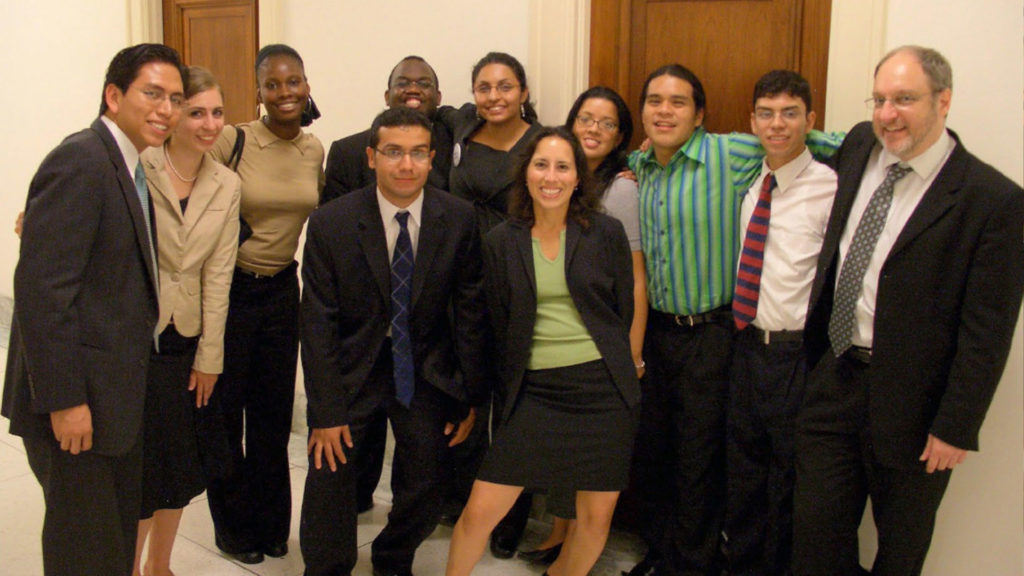
In Summer 2006, one of the first DREAM Act Congressional briefings happened, where undocumented youth met with Senators Obama, Durbin, Kennedy, and Diaz-Ballart
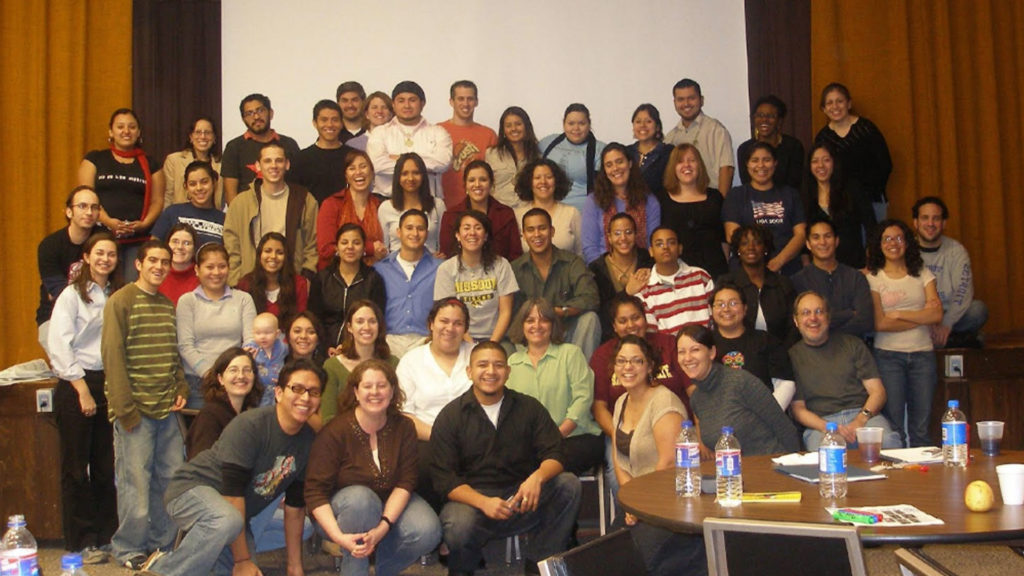
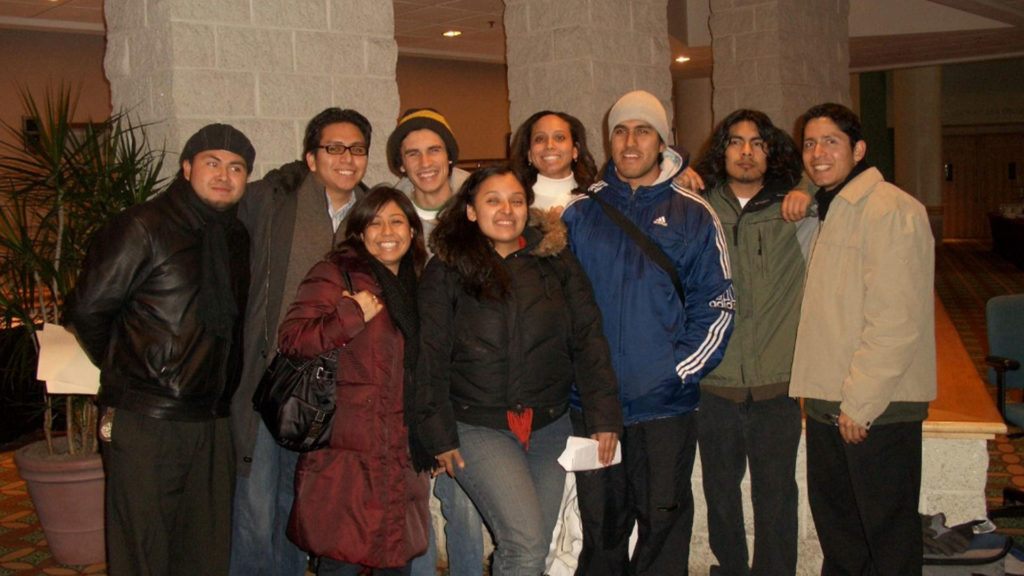
In January 2007, the first independent United We Dream meeting happened in Kansas with close to 100 undocumented youth gathering.
In the Spring of 2007, a prominent immigrant rights organization held their national immigration reform gathering. Some of the UWD youth leadership attended, however little support was provided. Our meeting was a ‘coat and luggage room.’ This moment proved to be pivotal for many of the undocumented youth present. For many, it was the moment we decided to create something independent, where undocumented youth decided how our organization was run with and for undocumented youth.
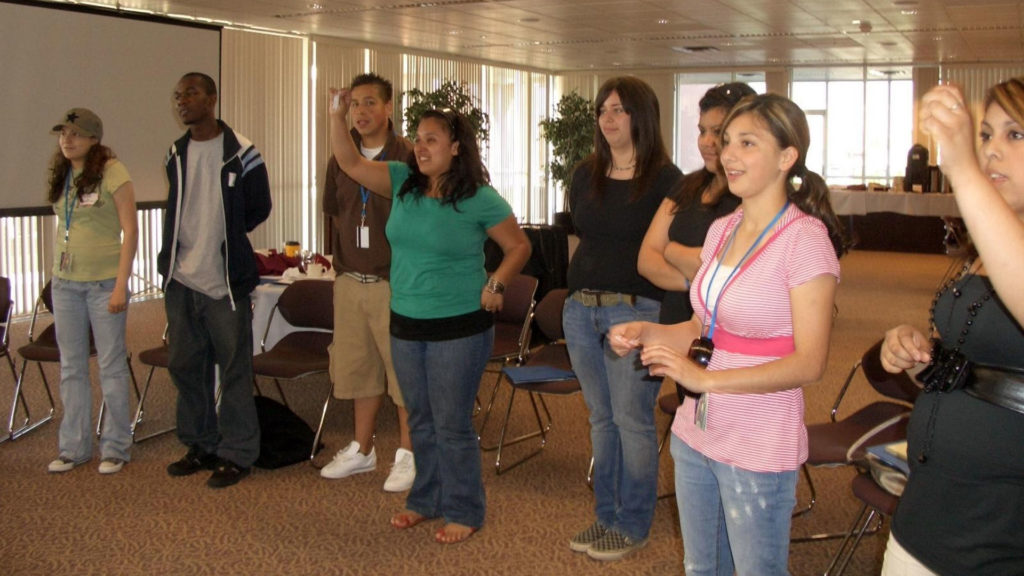
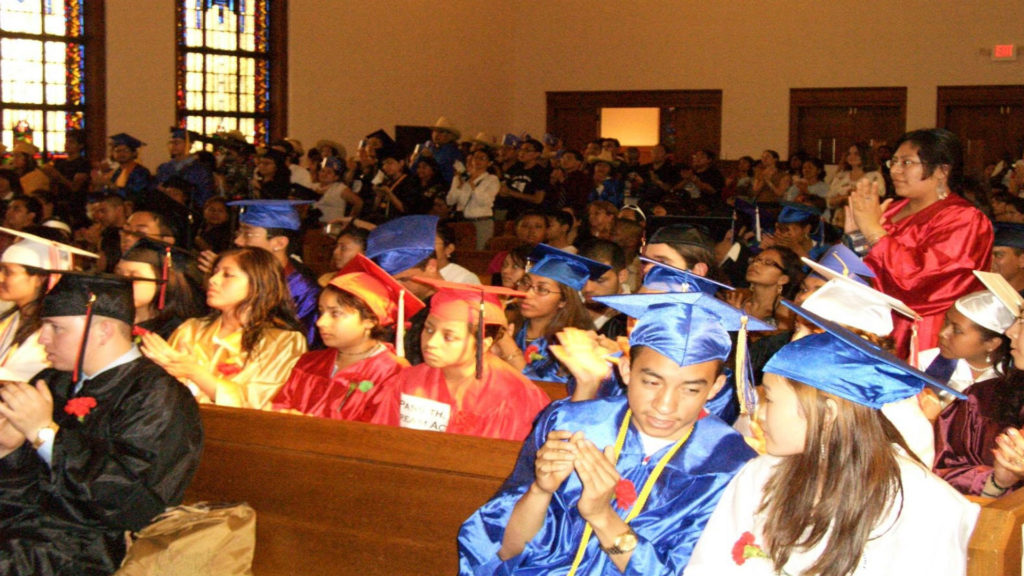
In June 2007, youth organizers convened for training opportunities and strategy sessions, including a national meeting in Boise, Idaho. Meanwhile, DREAM activists and organizers were connecting on weekly conference calls under the space for policy updates and strategy for the DREAM Act. Nevertheless, no national infrastructure existed that could sustain the energy and growing political astuteness of immigrant youth organizers.
That same June, UWD held one of the first Graduation Ceremonies in DC with more than 400 undocumented youth. When the Dream Act failed to get sixty votes to end a Senate filibuster in 2007, several of our groups lost membership, leaving individuals unsure of what to do next. Attendance on national calls dropped, and many groups focused on 2008 electoral work. In the void, a group of organizers and leaders came together to reflect on the DREAM Act campaign and talked about building a movement and an organization that would not crumble on up or down votes in Congress.
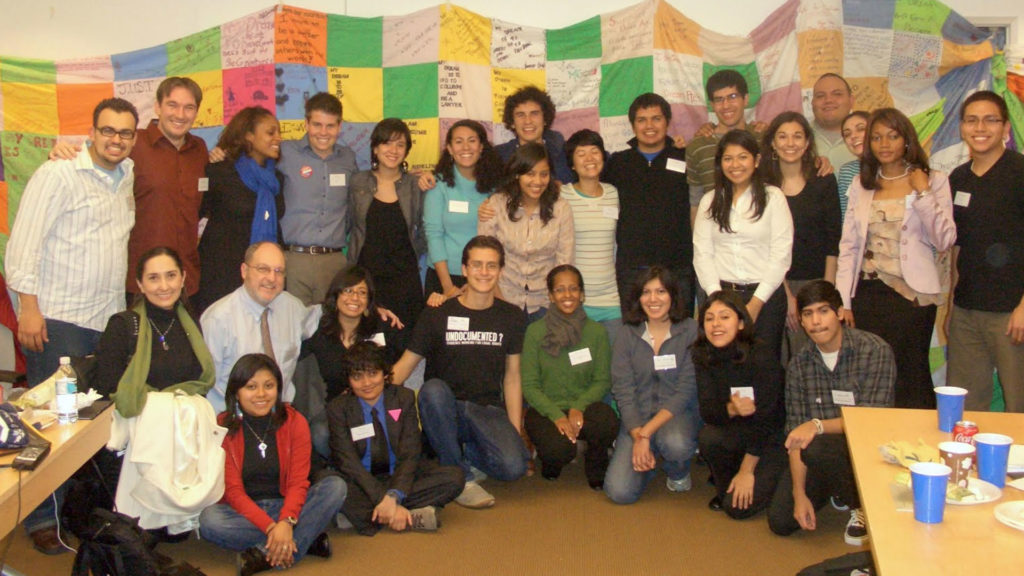
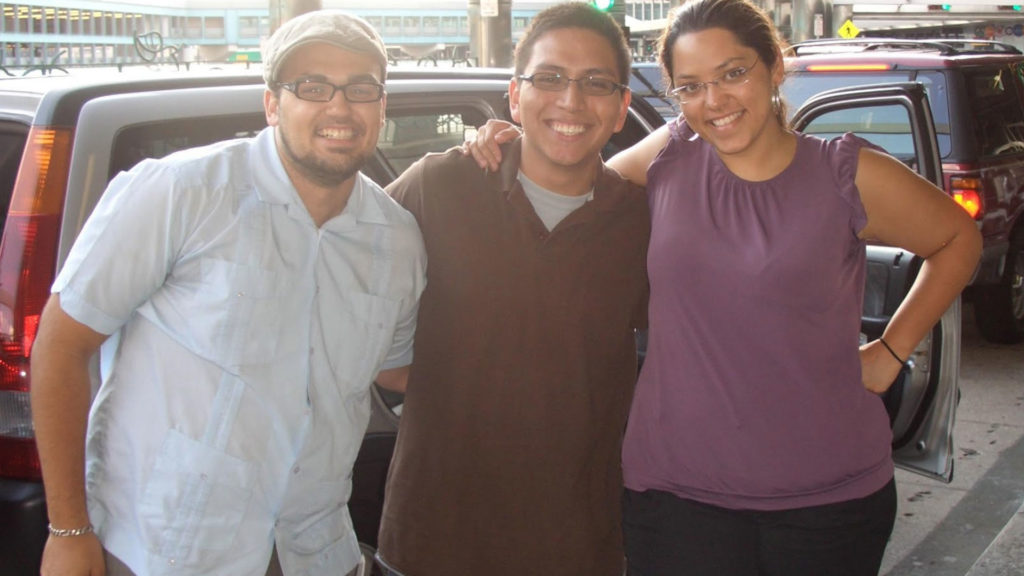
In the summer of 2008, it was official that we wanted to build a powerful and united immigrant youth movement. The original concept was titled “INDU” (now more commonly known as Undocu), which was developed by Jose Marantes, Julie Gonzalez (who is ran for Colorado state Senate in 2018), Carlos Saavedra, and Walter Barrientos. The main objective of this concept was to build something that would go beyond a national campaign based off the congressional calendar, but rather a space where we would train and support immigrant youth to build a sustainable movement nationwide that would engage immigrant youth to build the power of our communities across the country.
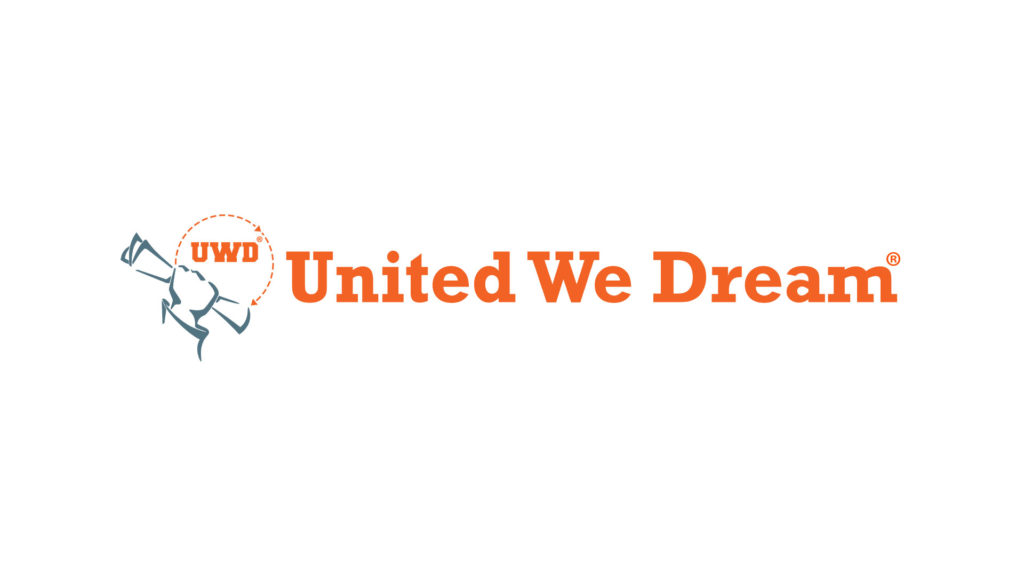
By December 2008, the United We Dream Network met. Present in the room was a dynamic and overwhelmingly diverse immigrant youth leadership, including Cristina Jimenez, Julieta Garibay, Marisol Ramos, Josh Bernstein, Sookyung Oh, Matias Ramos, Adey Fisseha, and others, who became part of the founding board for the organization. From the meeting, it was clear that an informal coalition structure could no longer suffice to sustain the much broader long-term vision of building an immigrant youth movement well beyond advocating for a change in immigration laws. Furthermore, there was a shared vision by key youth leadership that a national structure should be created that was led by young people whose lives are directly impacted by unjust immigration laws. The immigrant youth leaders agreed that National Immigration Law Center (NILC) should continue to anchor the network and NILC agreed to support it as a youth-led organizing network and become its fiscal sponsor. As a result, the United We Dream Network was formed.
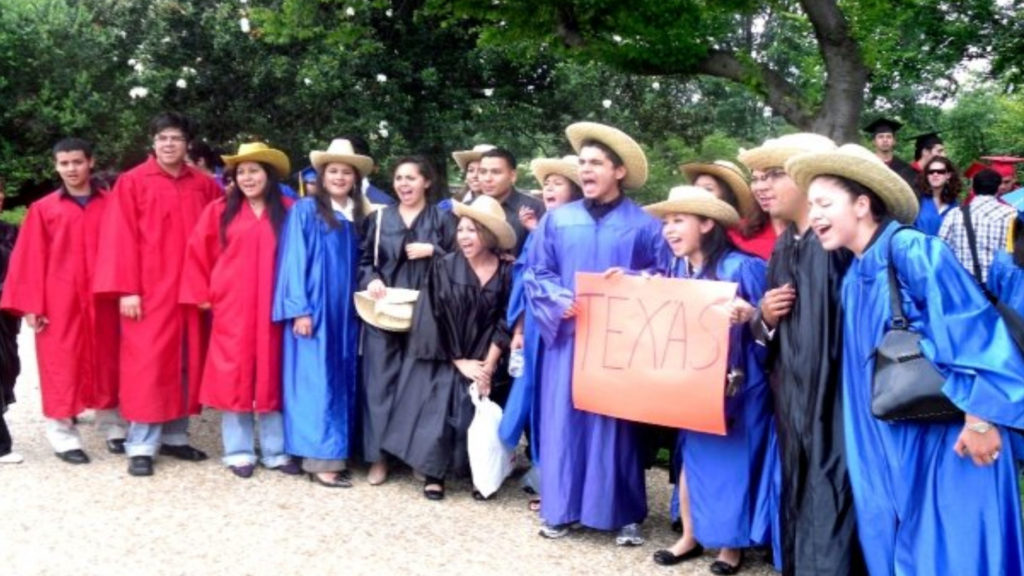
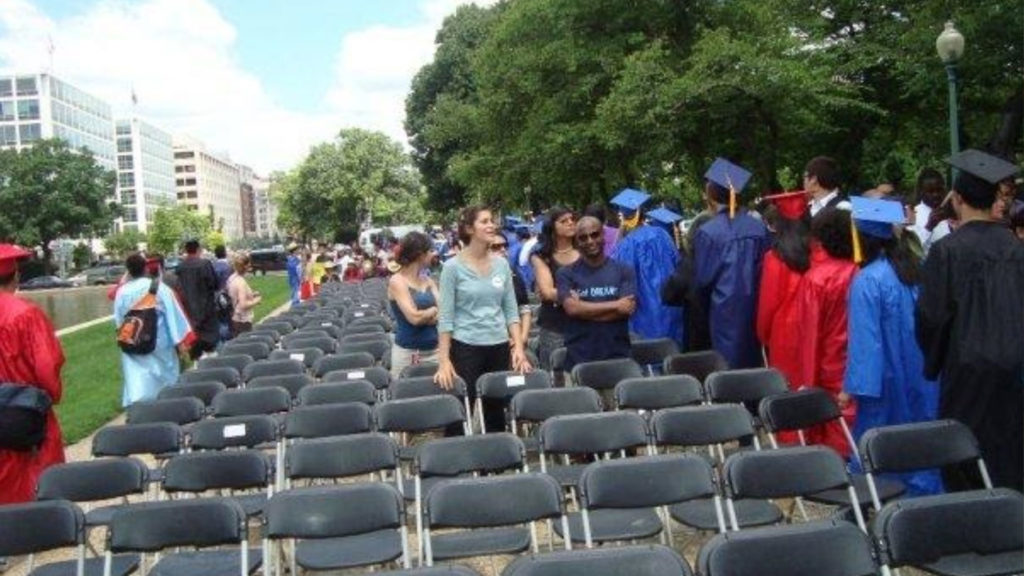
In March of 2009, UWD held its first funder briefing in New York City and became a recipient of seed grant support from Unbound Philanthropy, The New World Foundation, and the Four Freedoms Fund.
Since day one, we knew we had to hold members of Congress and even the President of the U.S. accountable to their promises. When Rigoberto Padilla, an immigrant from Mexico, was detained by local police on January 2009, our community knew what to do. Immigrant students held rallies and flooded Congress’ with emails and faxes, resulting in the city of Chicago passing a resolution calling for Rigoberto’s stay of deportation and getting support from 5 Members of Congress from Illinois. As time went by and the Obama administration did nothing, we knew we had to continue to organize and push to win.
The Dream Act was reintroduced in 2009 and was building support from non-traditional sources, including Microsoft, the News Corporation owned by Fox Broadcasting, and another 17 business in New York. The light was getting a bit brighter!
In June 2009, we held a DREAM Graduation in DC with our numbers growing to more than 600 undocumented youth.
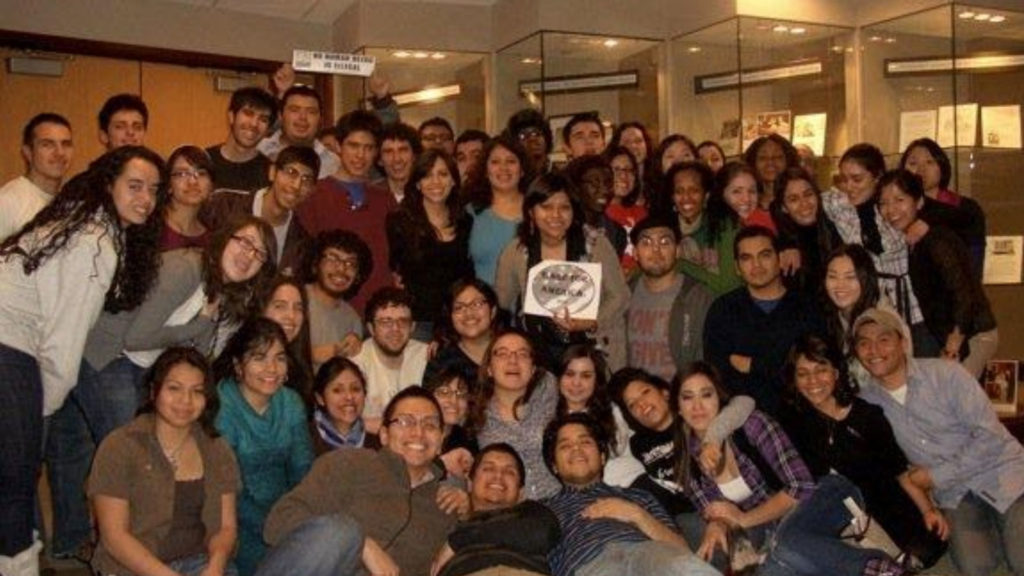
In 2010, as many kept on pushing for immigration reform, our assessment was that politically we needed to take an approach of incremental wins. It was then that UWD’s membership decided to push for the DREAM Act. UWD escalated in tactics and the Education Not Deportation (END) campaign was born. The END program, for example, was launched in 2010 to stop the deportation of Dreamers and their families by highlighting their stories and galvanizing support from the community. END not only worked with local groups to stop deportations, but also evolved to lead all of UWD’s local enforcement campaigns and efforts.
By the late Spring of 2010, UWD leaders walked thousands of miles from Florida to D.C. with the Trail of Dreams. The Trail of Dreams in 2010 was a 1,500 mile walk from Miami, Florida to Washington, D.C. created by four students (Gaby Pacheco, Carlos Roa, Felipe Matos, Isabel Rodriguez) to support the passing of the DREAM Act.
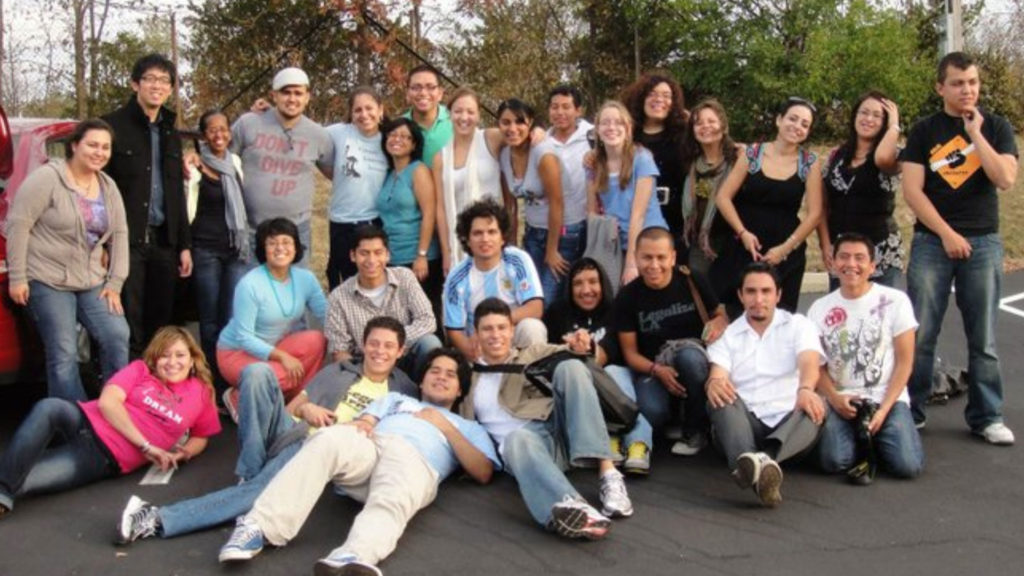
With the first sit-in for the Dream Act on May 18, 2010, more and more immigrant youth risked deportation by coming out of the shadows and putting their bodies on the line. Such actions included shutting down a busy street in Los Angeles to urge Senator Feinstein to pass the Dream Act as a stand alone bill; and 20 youth being arrested for staging a sit-in in the atrium of the Hart Senate building and in offices of people standing in the way of our dreams.
By October 2010, we held a United We Dream Congress in Kentucky where we established our membership structure, to include a National Coordinating Committee (NCC) and an at-large board election.
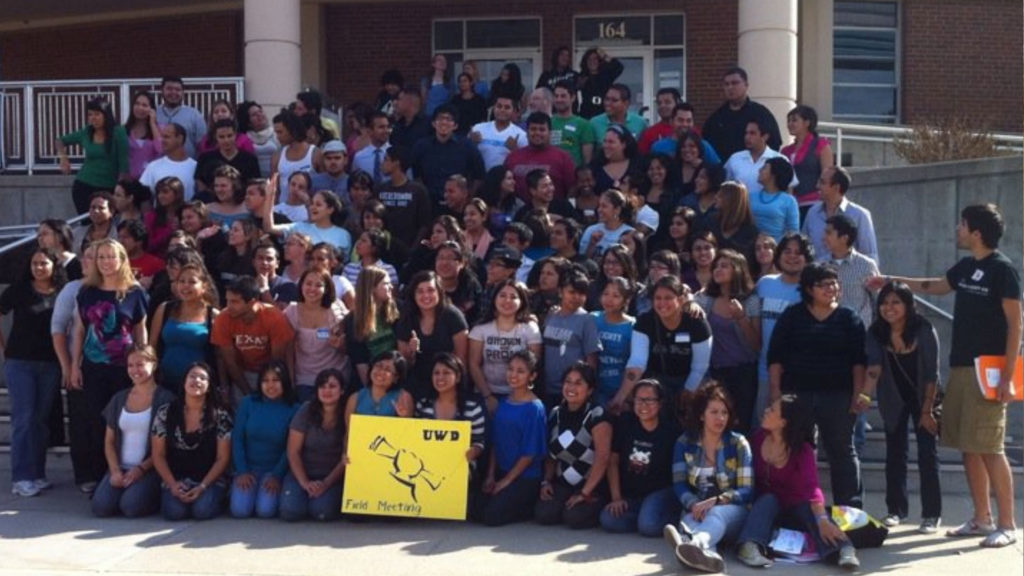
Then hunger strikes started to pop-up in Kentucky, Minnesota, North Carolina, and Texas.
This is when we knew our stories were making a difference—they were our power. We were putting the pressure on every single Senator standing in the way of our future. For example, 77,000 calls were made in one day to urge senators to pass the Dream Act. Whoa!
On December 9, 2010, the DREAM Act passed in the House of Representatives as hundreds of undocumented youth mobilized to DC.
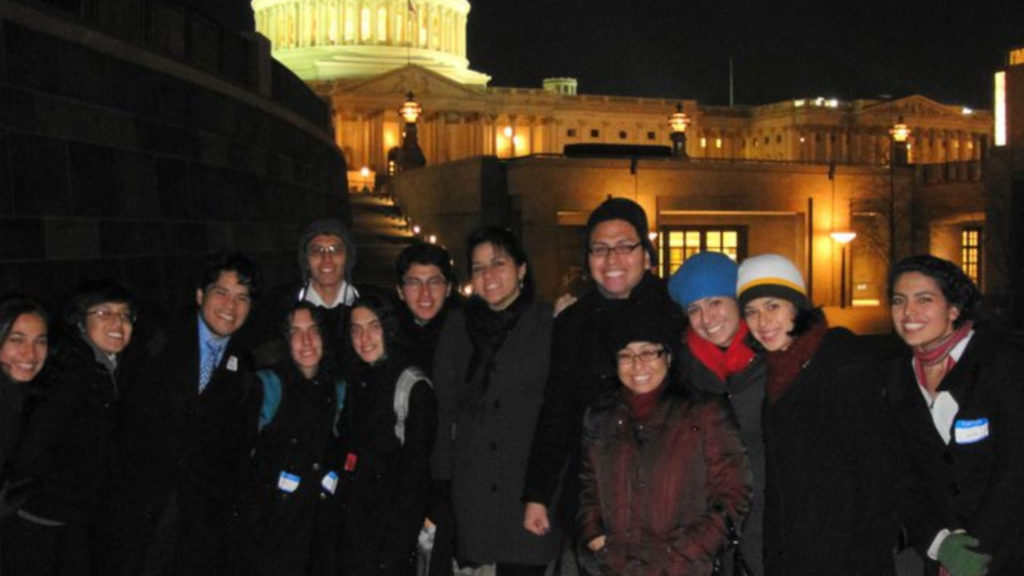
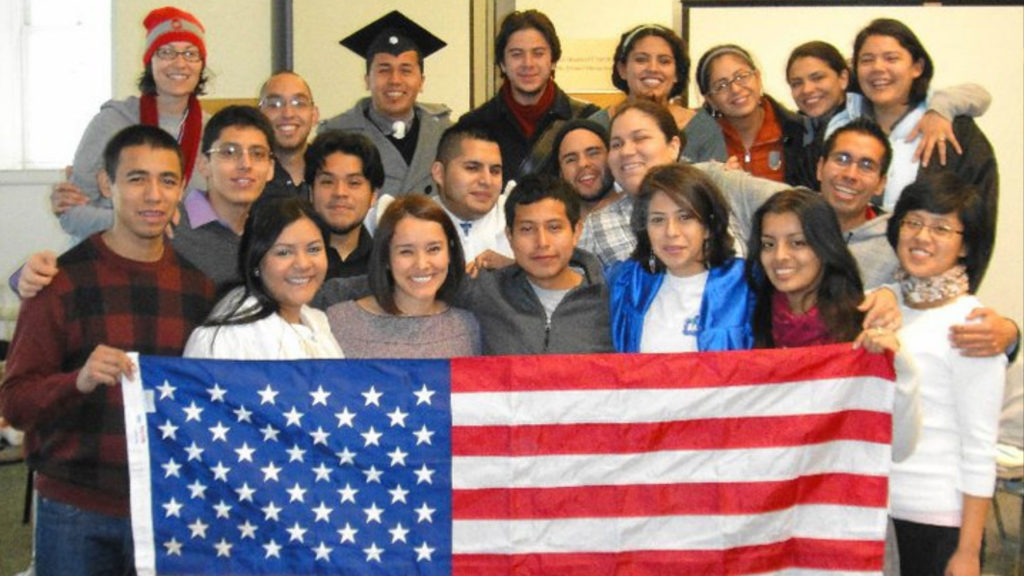
When the DREAM Act was up for a vote, five Democrats—the people who were supposed to be with us—voted against our lives; these five Democrats were responsible for the Dream Act not passing.
But this was not an end for us. We stopped waiting. We organized our communities, created our own strategy, and used new tactics. At a moment when hope seemed scarce, we declared ourselves UNDOCUMENTED AND UNAFRAID!
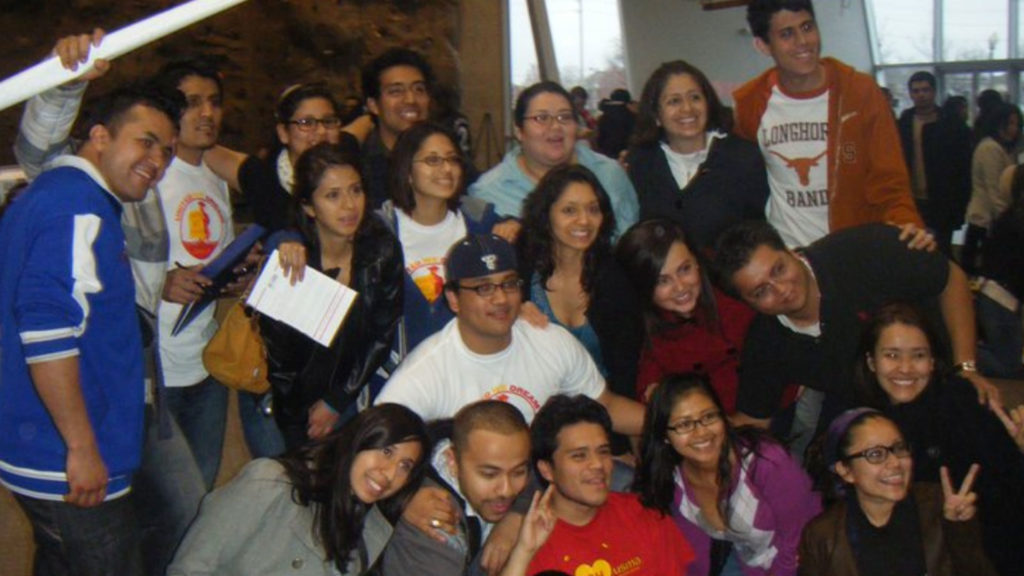
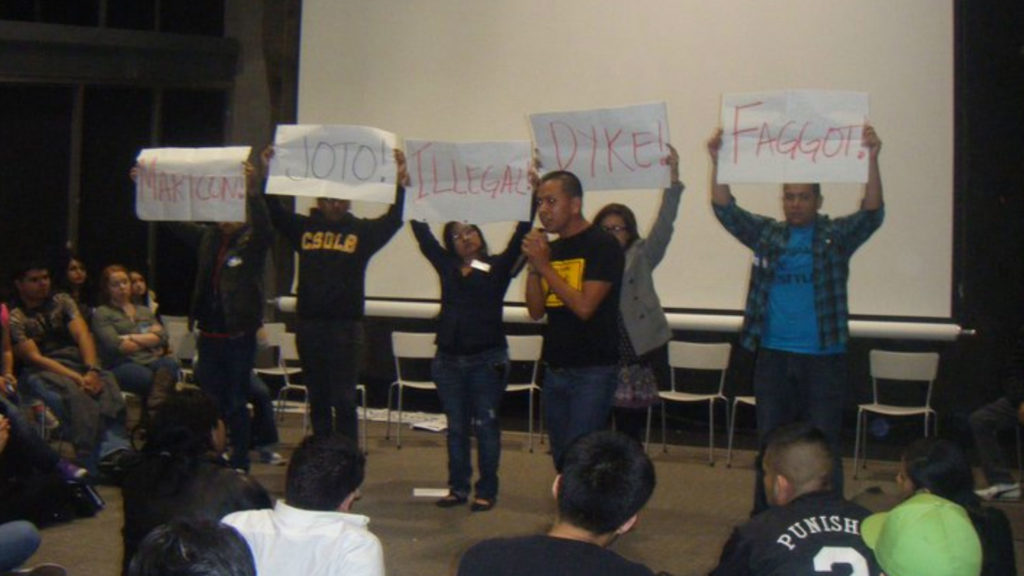
Although we lost the Dream Act in 2010, we took action to pressure President Obama to grant relief for young immigrants through our #Right2Dream campaign. By then, over 100 Education Not Deportation (END) cases had been fought and resolved in less than two years, and over thirty END field coordinators had organized and mobilized to halt deportations of immigrant youth.
We knew we were united and our movement was only getting stronger. We had built power. That is why we came together to organize and learn from each other at our first United We Dream Congress in Memphis, Tennessee on March 2011. We brought together immigrant youth from 55 organizations from 25 states. This was also the first time our fierce immigrant youth came out as Queer and Unashamed!
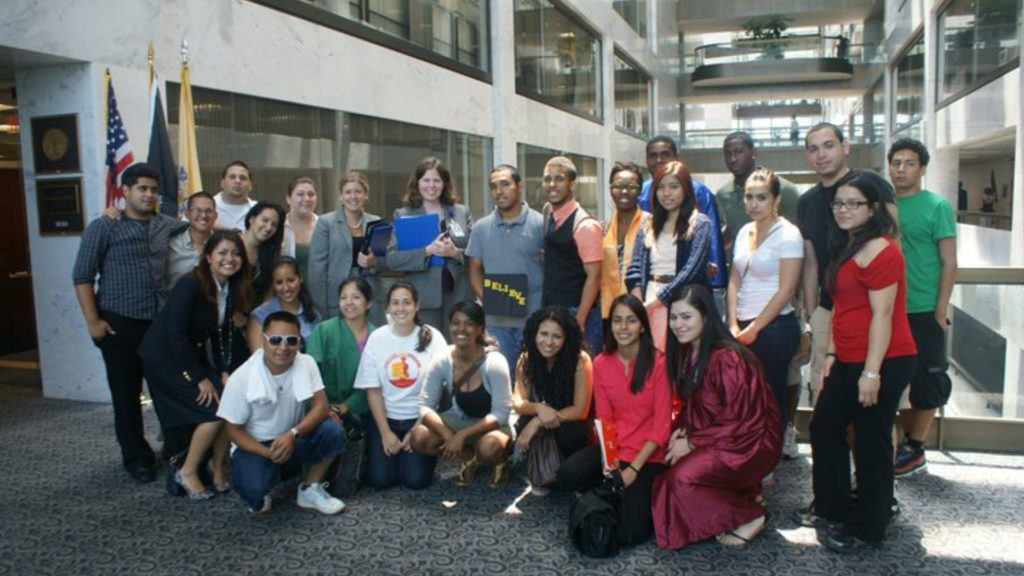
In May, Obama joined Jorge Ramos on Univision network, where Karen Maldonado shared her story. She told Obama that his administration was detaining and deporting youth, as she showed him her deportation order, which she and countless others had received.
June 2011, the first ever DREAM Act hearing in the U.S. Senate was held. UWD mobilized undocumented youth from across the country. We held one of our first take overs at the Republican national convention.
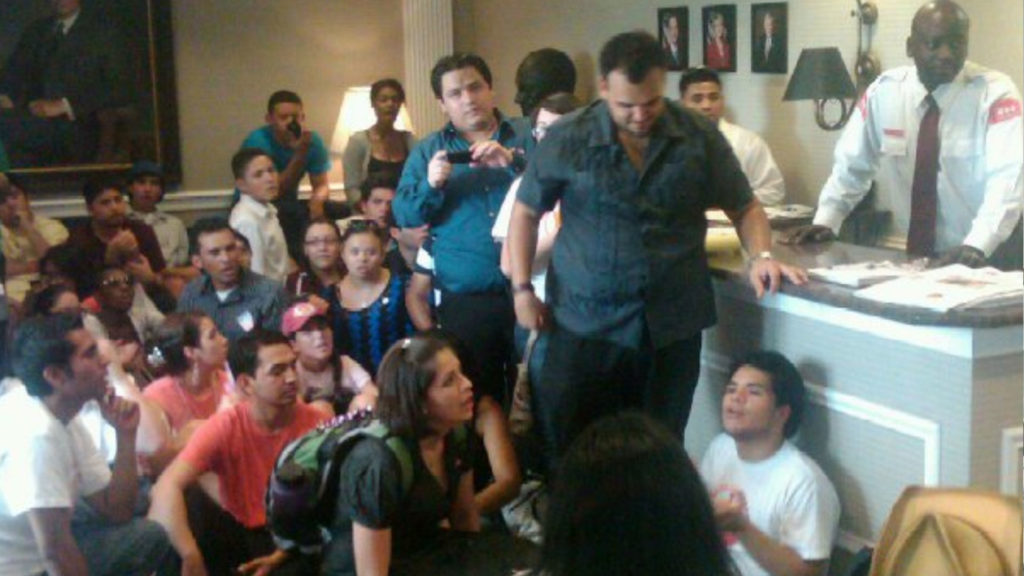
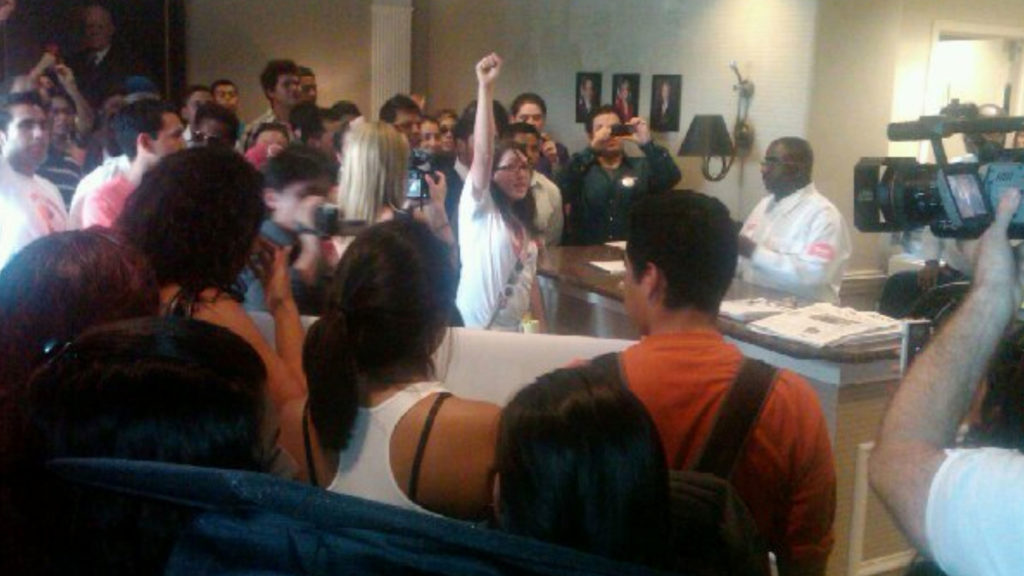
The Education Not Deportation (END) campaign was designed to stop the deportation of immigrant youth otherwise eligible for benefits under the Dream Act. Unless the current administration granted immigrant youth ‘administrative relief,’ hundreds of thousands of Dream Act-eligible students would be in danger of deportation.
We used direct actions and our own media to shine light on the detention and deportation of our community. We took our stories and shared them online via Facebook, Twitter, Youtube, and many more outlets. Our voices needed to be heard.
With the creation of the Dream Educational Empowerment Program (also known as DEEP), we had two goals in mind: (1) to increase the number of immigrant youth who could benefit from future legislation; and (2) inspire others to support immigrant youth in the transition from high school to college.
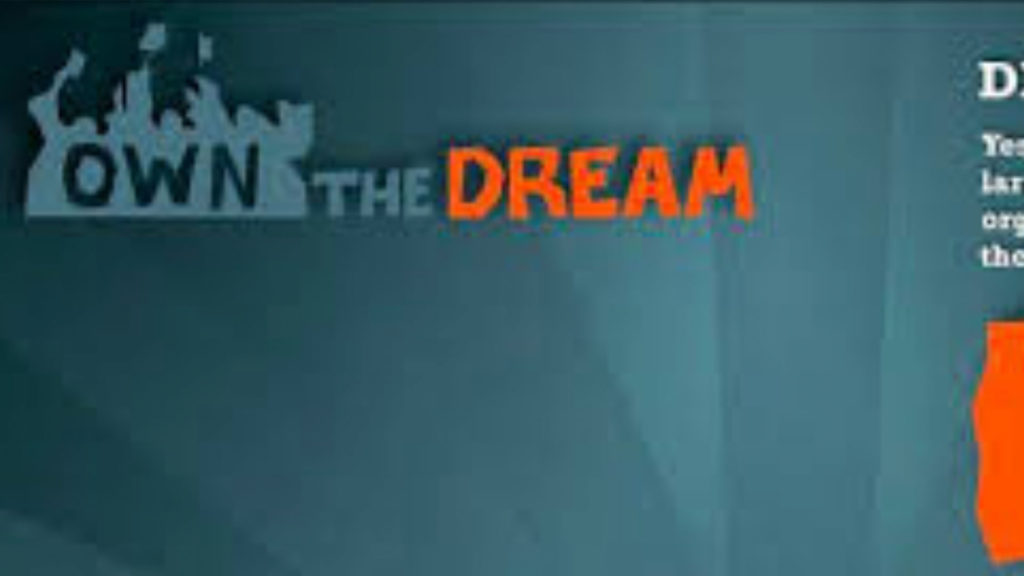
Our fight continued and resulted in 48 affiliate organizations in 28 states. In May, we held our “Right to DREAM” campaign’s National Day of Action with rallies, marches, and protests in 7 states and in 12 cities. We kept constant pressure on the administration because we knew they could do this. The morning DACA was going to be announced, a HUGE action was planned in Los Angeles, California.
In 2012, UWD leaders organized and advocated for administrative relief for undocumented immigrant youth through the “Right to Dream” campaign. In the midst of record-high deportations, state-level anti-immigrant laws, and the implementation of inhumane immigration enforcement programs, we held dozens of actions around the country, mobilized thousands of immigrant youth, conducted legal research, and brought together leaders from the labor, civil rights, and faith sectors to ask the Obama administration to stop detaining and deporting immigrant youth. DACA was enacted as a result of this mobilization –the first major immigration policy victory in over 25 years!
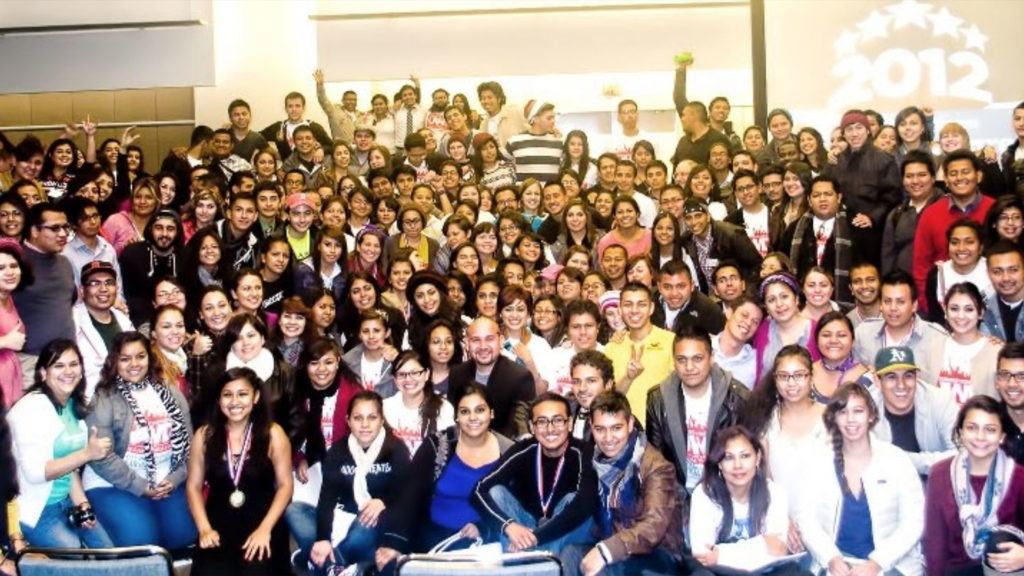
After DACA, we knew we had to use DEEP to focus on ensuring that no Dreamer was left behind, given the educational requirements for applying for DACA. We focused on 15-18 year old Dreamers so they would not accrue unlawful presence once they applied for DACA. DEEP was created by Dreamers for Dreamers.
During UWD’s Congress in December 2012, 600 Dreamers pledged to stand shoulder-to-shoulder to fight for our families.
Through the “I am a Dream Voter” civic engagement campaign, Dreamers gathered over 15,000 pledges from Latino and immigrant voters, who made their voices heard during the previous year’s national election cycle.
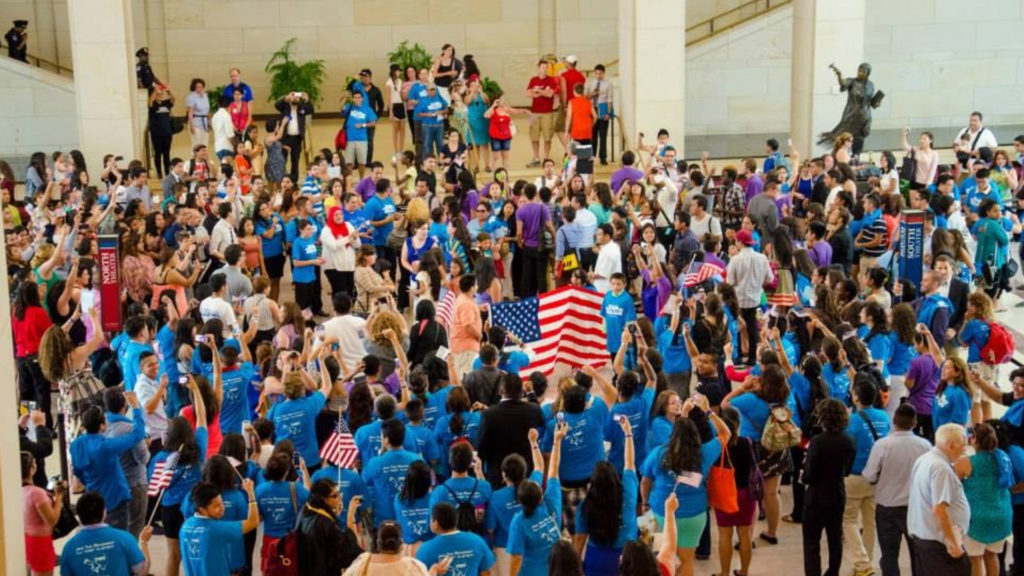
In 2013, UWD leveraged the power we had acquired in the policy debate to focus our advocacy on a pathway to citizenship for Dreamers and parents, waivers for family reunification, and policy that would benefit the most number of immigrant youth regardless of their age. UWD’s advocacy efforts, coupled with their organizing work in the field, were successful in shaping policy proposals affecting immigrant youth and DACA beneficiaries. In 2013 we saw the most progressive Dream Act as part of the Senate’s immigration reform legislation.
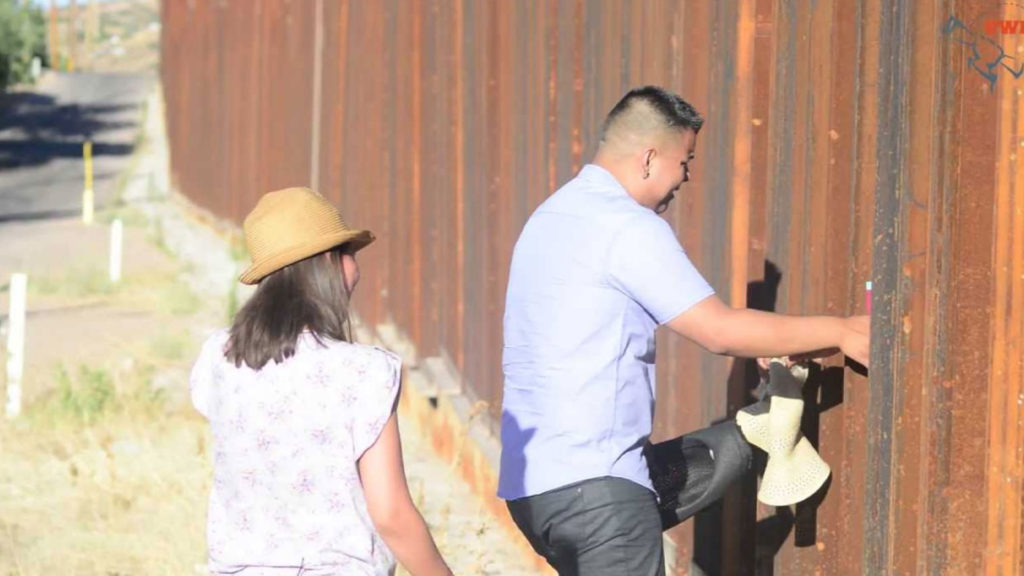
On June 11, Evelyn Rivera (UWD Organizer and leader with the Florida Immigrant Youth Network), Renata Teodoro (leader with the Student Immigrant Movement in Massachusetts) and Carlos Padilla (leader from Seattle, Washington with the Washington Dream Act Coalition and UWD’s Queer Undocumented Immigrant Project) reunited with their mothers who traveled from Colombia, Brazil and Mexico, respectively, to hug their children through the fence at the U.S./Mexico Border at Nogales, Arizona – Nogales, Mexico.
Operation Butterfly was a representation of UWD’s core strategy to advocate for an end to inhumane deportations by exposing the pain and the harsh realities that our undocumented immigrant community members live through each day. Through Operation Butterfly, we sought to defend the right to be with our families, and illustrate the urgent need for humane, immigration reform policy changes. The intensity of this June 11 action allowed us to (1) extend the campaign narrative to be inclusive of the original Dreamers–our parents; (2) highlight the pain of family separation; and (3) expose the family and community damage caused by senseless enforcement. Operation Butterfly exposed the moral crisis caused by the country’s current enforcement tactics and systems, and visually and emotionally demonstrated why the U.S. needs the type of immigration reform that UWD advocates.
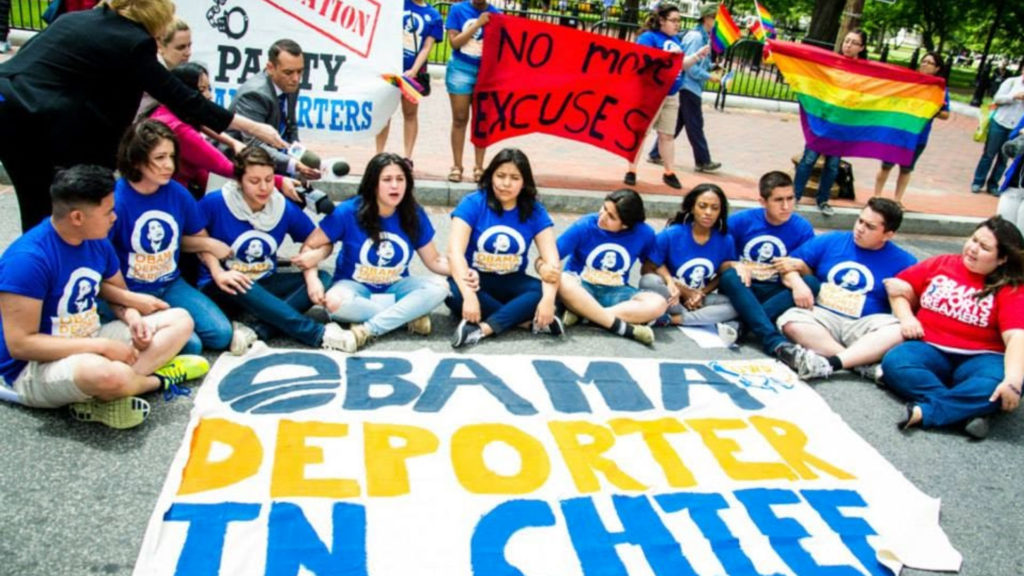
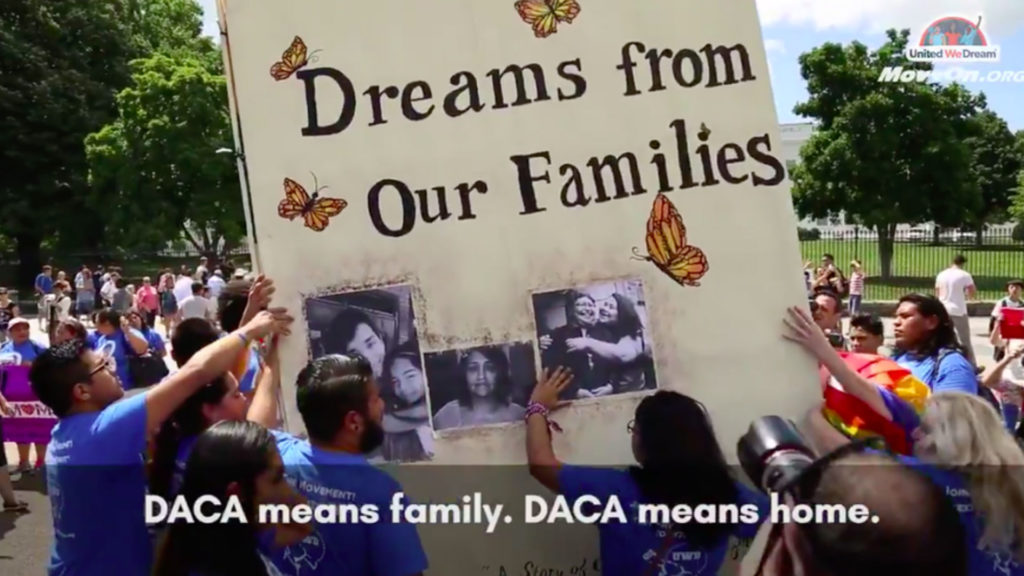
In June, 2014. After the Senates passed comprehensive immigrant reform in the house, congress members were not courageous enough to pass it. UWD members made the strategic move to fight for protection for our parents.
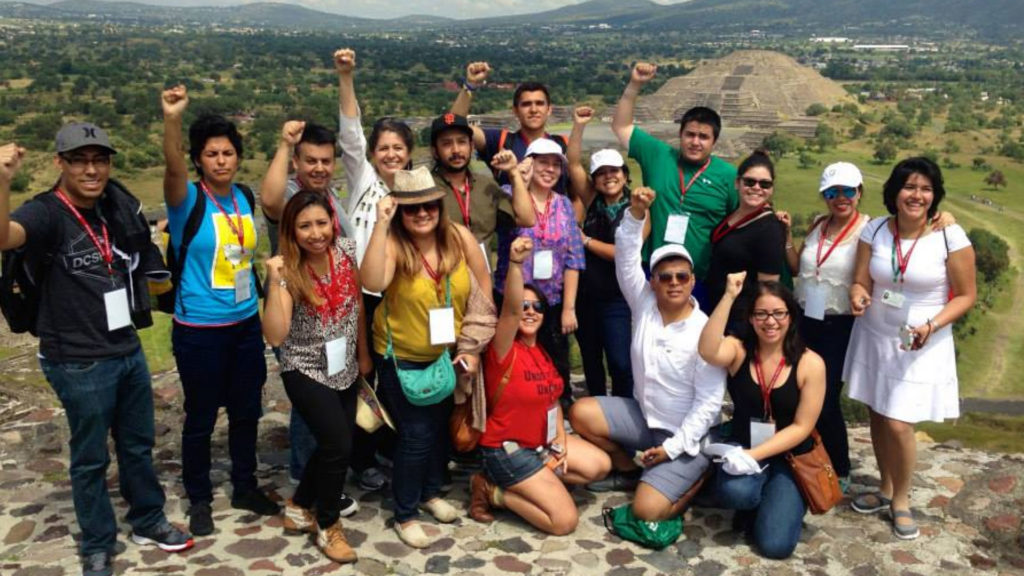
In October 2014, the Mexican Consulate invited a group of DACA-mented youth to Mexico while using Advance Parole. For many, it was the first time ever going back to their country of birth after decades of not seeing their loved ones.
In November 2014, after months of demanding protection from Obama’s deportation machine, UWD and other allies, won DACA+ that covered many of the immigrant youth who were not covered by DACA and Deferred Action for Parents of Americans and Lawful Permanent Residents (DAPA). Almost 6 million undocumented parents could have been protected.
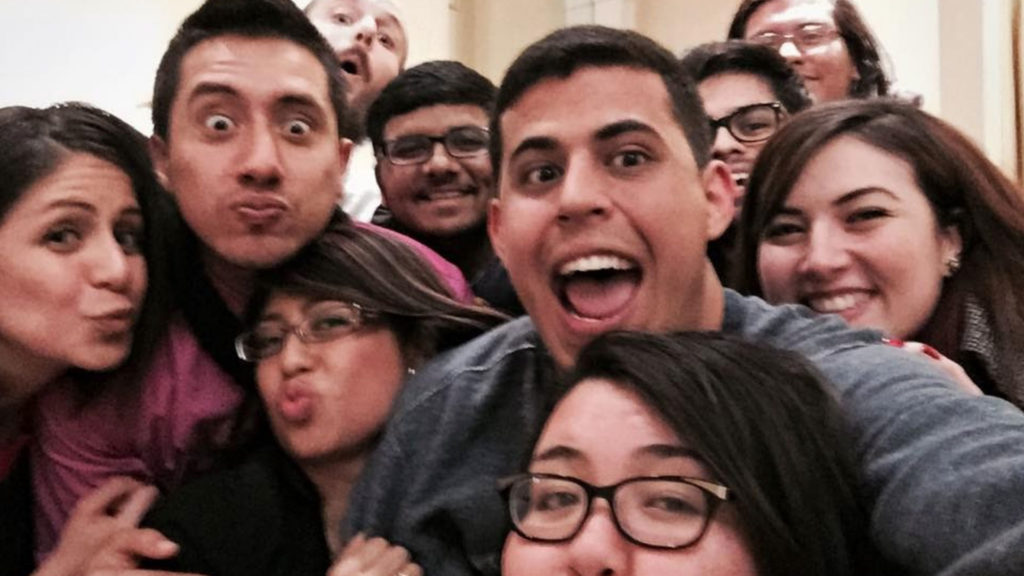
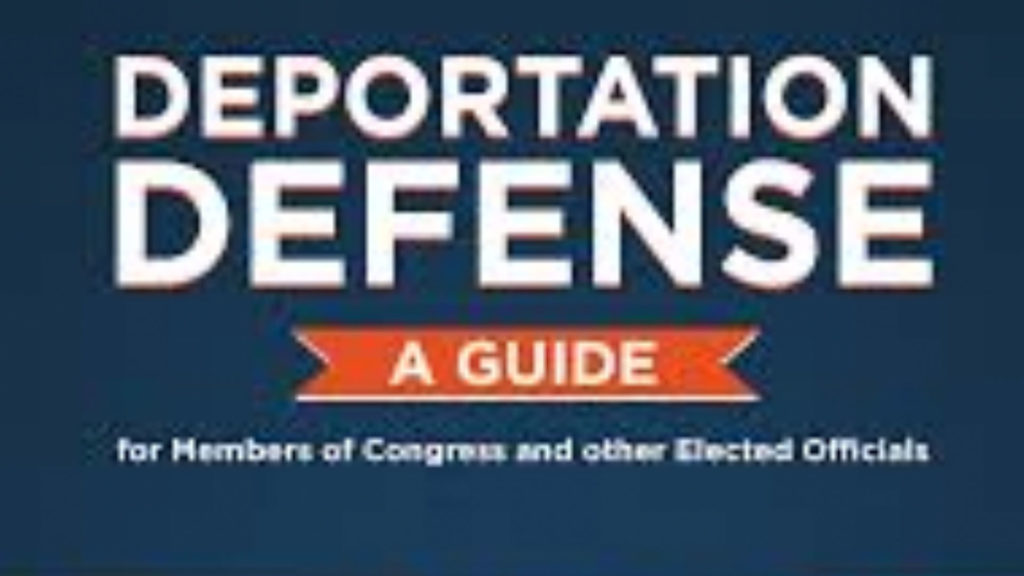
In December 2014, UWD launched the first and only volunteer-led national hotline that collects case reports and data to systematically track on-the-ground behavior and activity by local enforcement agencies and ICE.
Through the Deportation Defense Hotline, we were able to document over 400 cases of inhumane and rogue behavior by local law enforcement and ICE towards immigrants. Supported by this information and our community-driven research, UWD published 2 major reports: 1) Prosecutorial Discretion Denied, which highlights cases of ICE not following their guidelines; and 2) Ending Local Collaboration with ICE, a toolkit that engages local communities in investigating how ICE works with local police. The reports have served as effective tools to advance enforcement advocacy and expose the inhumane and out of control enforcement system.
In 2014, UWD once again took to the streets of McAllen, Texas with our ‘I am a Dream Voter’ civic engagement campaign. Dreamers hit the ground hard in South Texas to spur voter turnout in the counties with the worst voting record in the country. Through this effort, Dreamers were able to garner the support of the local community, playing a pivotal role in increasing voter turnout in the Latino community of the Rio Grande Valley.
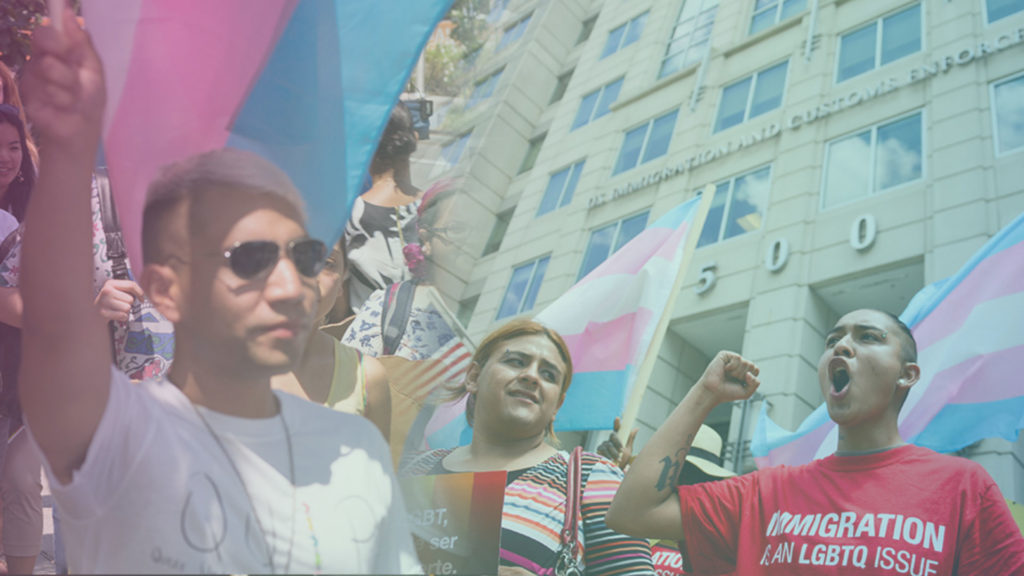
Undocumented LGBTQ immigrants faced increased marginalization and discrimination in and out of the detention system, the workforce, and health services, to name a few. In 2015, UWD led the #BreakTheCage campaign to shed light on the inhumane conditions that LGBTQ+ immigrants were subjected to and tackle the enforcement system that terrorized and profitted from the deportation of our communities. Through this effort, we called for a halt to the detention of undocumented LGBTQ immigrants.
In 2015, the undocumented community lived a bitter year when, after President Obama announced DAPA and the expansion of DACA, anti-immigrant states and leaders filed a lawsuit against the new immigration executive actions. DACA+ and DAPA were a victory won by the immigrant community and as such, we continued to defend them through organizing and mobilizing in the streets and advocacy in the courts. Our goal was to ensure that the over 4 million parents eligible for DAPA and the over 300,000 eligible for DACA+ were protected from deportation
In November 2015, UWD alongside Dream Defenders and Million Hoodies for Justice joined 350.org for an action with 1,000 youth from across the country who came together in Washington, DC for Our Generation, Our Choice. We demanded that presidential hopefuls adopt a platform that included racial, immigration, and climate justice. UWD was also one of the founding organizations of the Freedom Side, a collective of youth of color operating from a racial justice perspective to fight back systems of oppression that disproportionately target people of color.
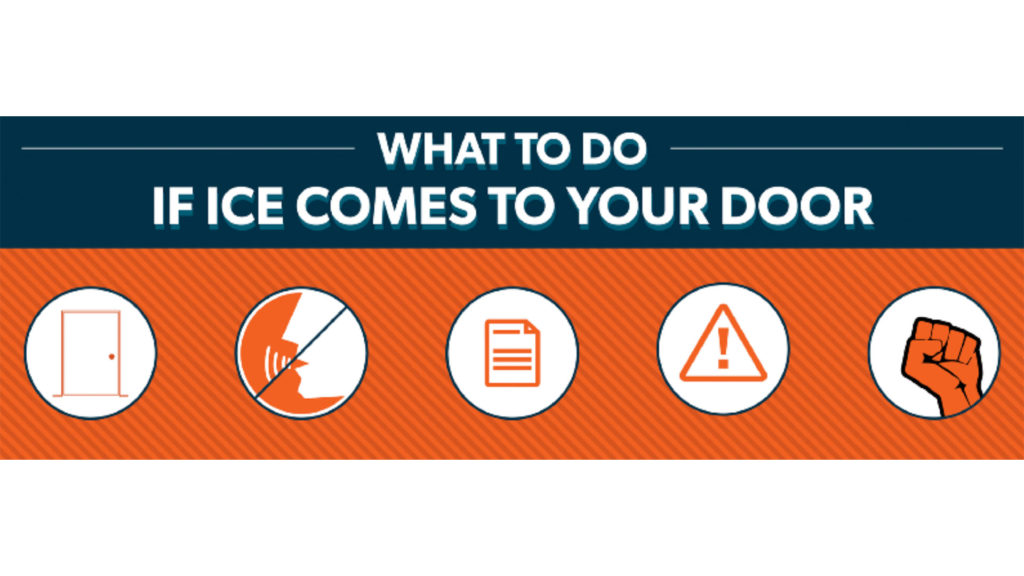
During the holidays of 2015 and the new year of 2016, the White House administration engaged in a massive deportation campaign, carrying out raids across the country that put the undocumented community on high alert. Such tactics terrorized the immigrant community and further intensified the reality of uncertainty and anti-immigrant hatred. UWD’s campaign manager gathered UWD community leaders, including the communication, online, advocacy, deportation defense staff, the NLC and enforcement field teams across the nation. Together, they developed a plan and a system of accountability for its execution to track progress on the plan and its impact. UWD’s Deportation Defense Hotline documented and tracked the location of the raids via received calls from the community.
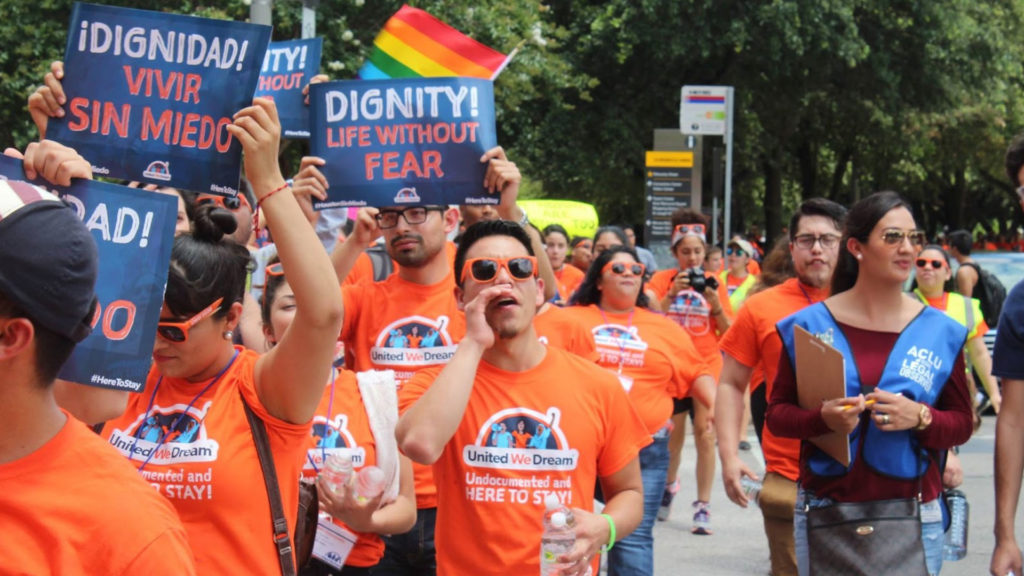
Through UWD’s 2016 Congress, we hosted the largest gathering of immigrant youth to date, convening over 1,000 leaders in Houston, Texas. Following this event, UWD experienced tremendous growth online reaching over 1.2 million users with our Facebook content, surpassing 70,000 likes, having our UWD Congress phone app used over 81,000 times, and increasing our overall engagement. This spike in engagement sparked our 2020 Vision, which was developed after an intensive 18 month strategic planning process, driven by the ideas and input of hundreds of our members and leaders.
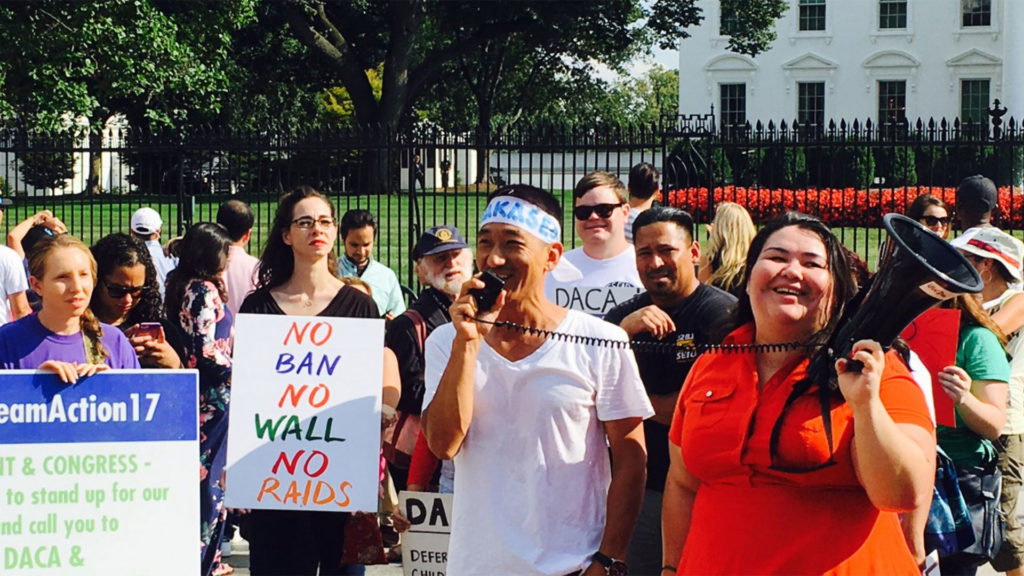
Throughout 2017, the Trump administration kept throwing attack after attack to every community you could think of, from our Black brothers and sisters to our Muslim communities. It seem to never end, but we continued to fight back!
In May 2017, the Texas Legislature passed SB4, the racist law that racially profiles immigrants. UWD Texas along with other local leaders took to the streets and for the first time ever in the history of the Texas Capitol – immigrants and people of color took over the Capitol to make it clear to white supremacists legislators that immigrants were #HereToStay. UWD Freedom fighters from New Mexico, Florida, DMV, and Arizona joined their Texas sisters and brothers against hate. In August, Texas Freedom warriors risked arrest, as Texas Attorney General Paxton deliberately attacked DACA.
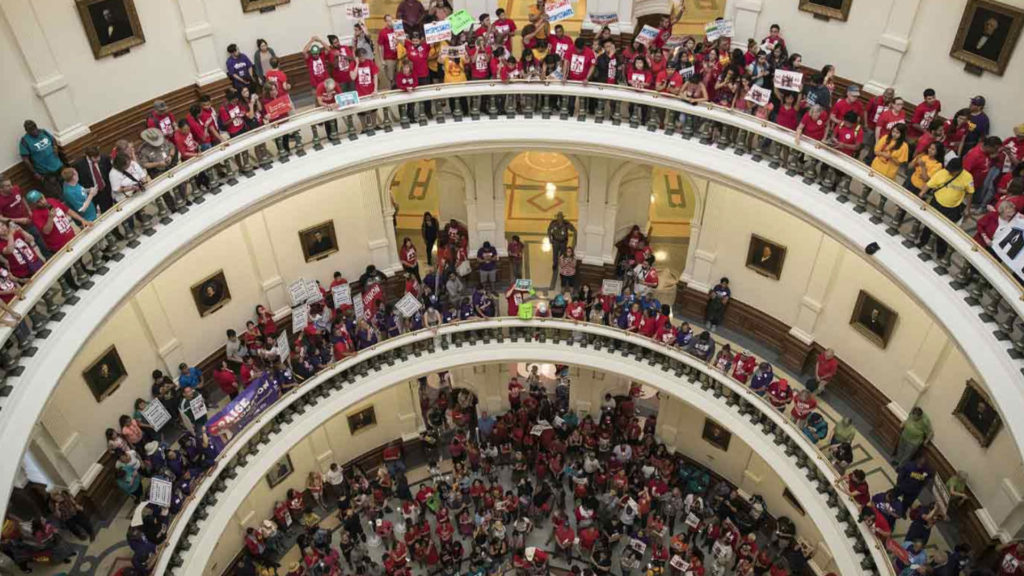
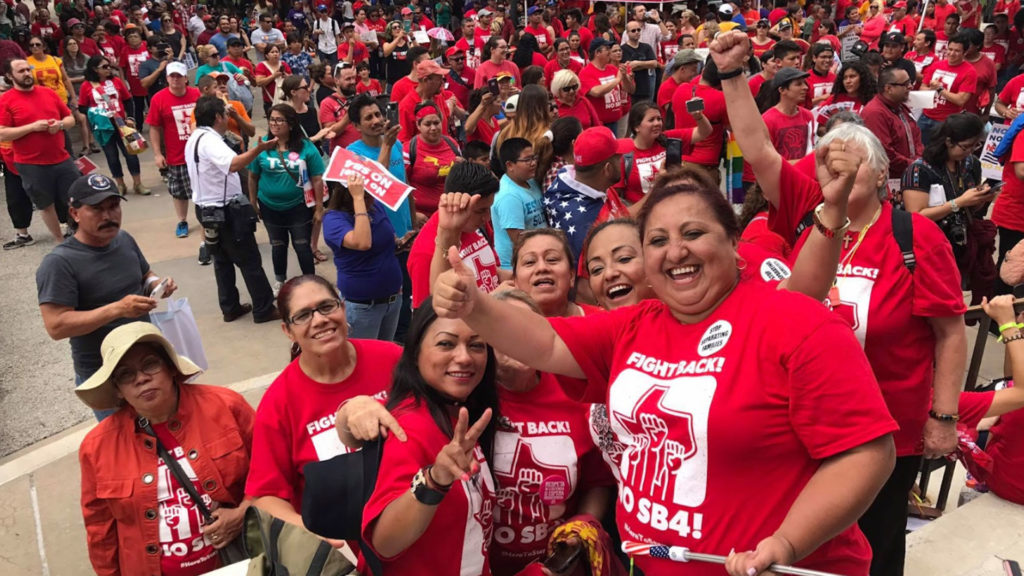
On September 5th, 2017 the administration announced the end to DACA, which offered protection to over 800,000 youth across the country.
It was time for Congress to find a solution to not only protect those 800,000 DACA recipients, butalso the broader immigrant community. Our Honey Badgers (direct action team), went across the country and took action against all the attacks to our communities. Through sit-ins, school walkouts, bird-dogging, marches, rallies, takeovers, and other actions, we continued to build the pressure.
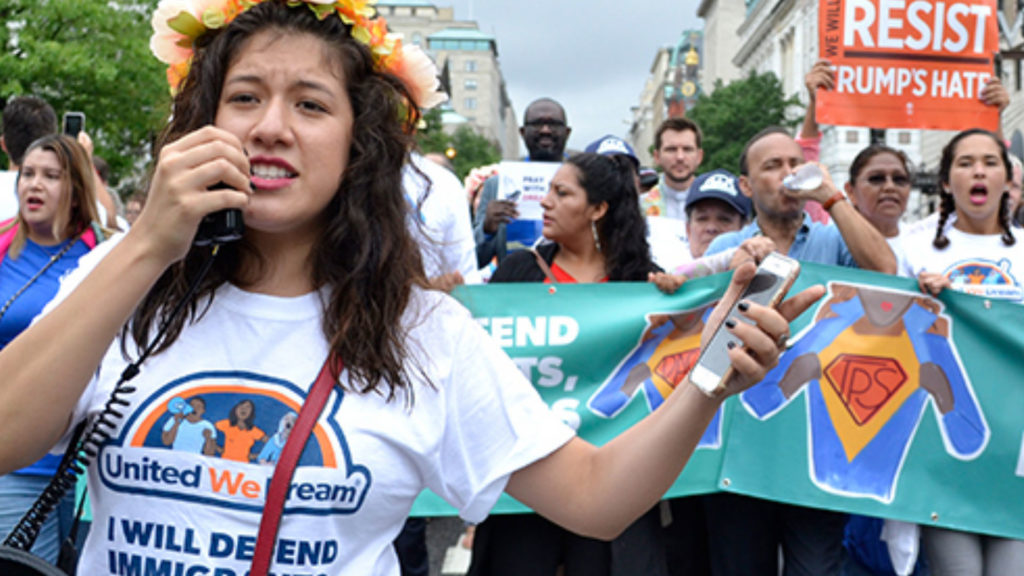
We had America behind us! Our partners stood with us and fought back, organized, and took action by our side. We brought the stories of thousands of immigrant youth to the halls of Congress and shutdown their offices, jammed their hallways and shutdown their cafeterias. We made tens of thousands of calls to elected officials demanding a Clean Dream Act.
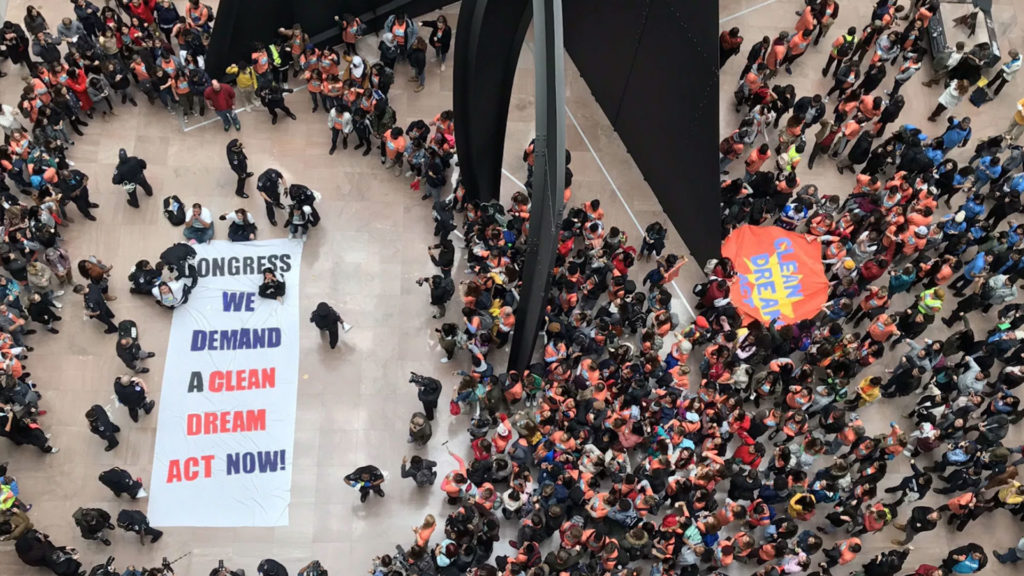
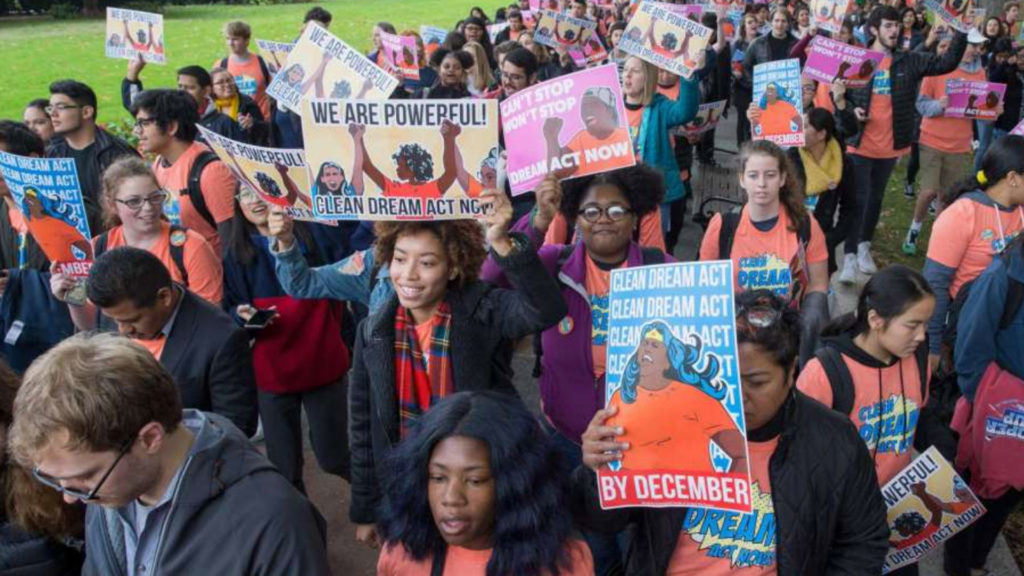
Thousands of undocumented students and allies across the country staged walkouts demanding the Dream Act.
Together, we showed America what the power of immigrant youth and our families looked like. In 2017, the deportation defense hotline received over 1,500 calls tracking ICE activity, rogue law enforcement, and deportations.
2017 was also a year for several sanctuary wins across the country:
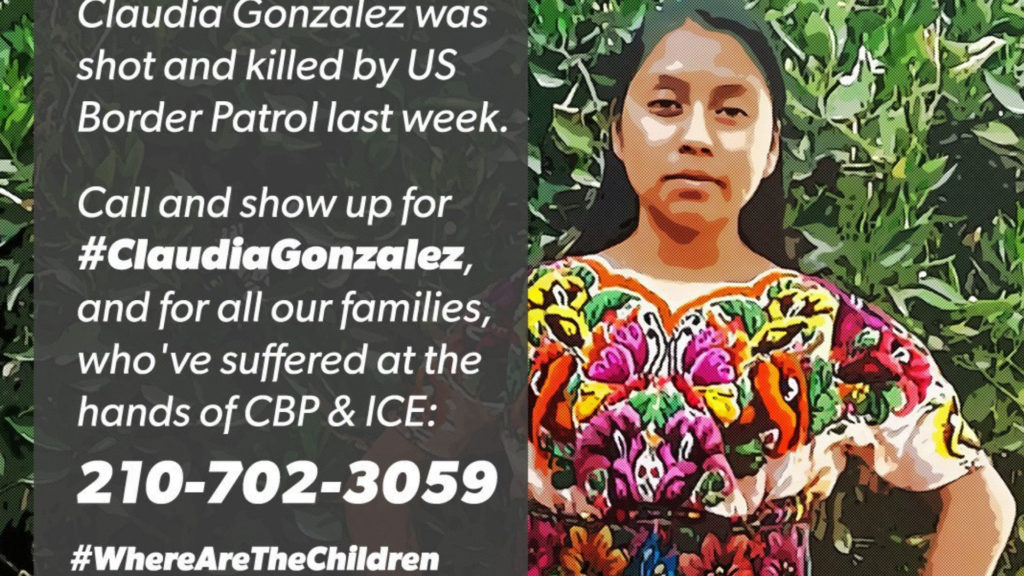
Congress had one job and they failed. They failed to protect immigrant youth and our families by blocking the Dream Act once again. Yet, we won. We one because we trained and built a community of freedom fighters that took action to fight for the Dream Act.
As we continued to educate our community on their rights, ICE and CBP ramped up their vicious attacks on our folks. It was time to expose them for their inhumane treatment and deportation of our families.
In 2018, we launched our #AbolishICE campaign.
The deaths of Roxana Hernandez by ICE and Claudia Gonzalez by CBP stirred up anger that turned into action. We took to the streets and demanded the abolishment of these agencies and the defunding of hate.
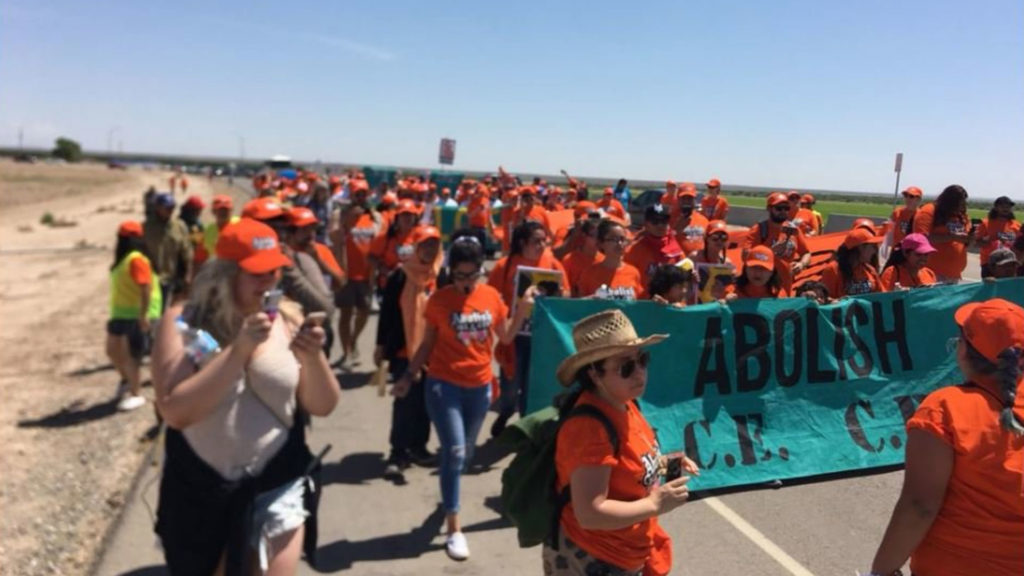
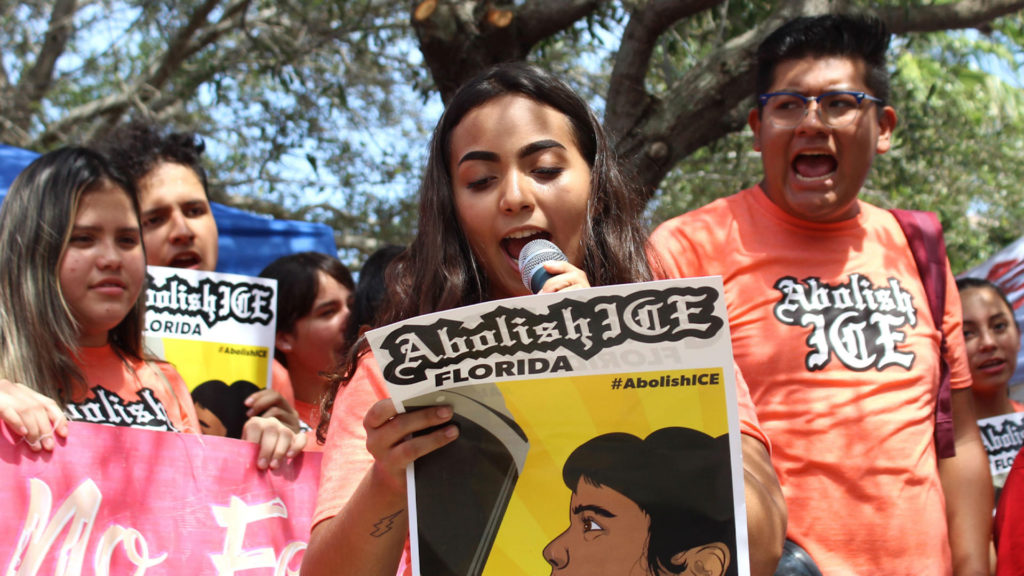
From actions in Washington, DC to Miami, Florida and even at the southern border, we fought back. In June, over 200 immigrant youth shutdown the Tornillo port of entry.
In Miami, we shut down a busy street and 19 warriors put their bodies on the line to demand the closure of Miramar Detention. We didn’t stop and we won’t stop!
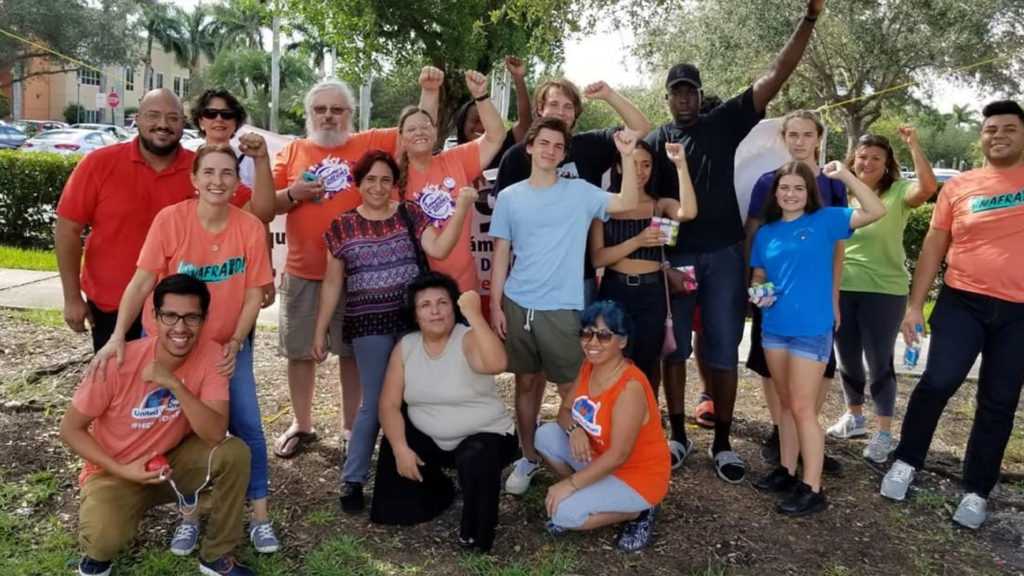
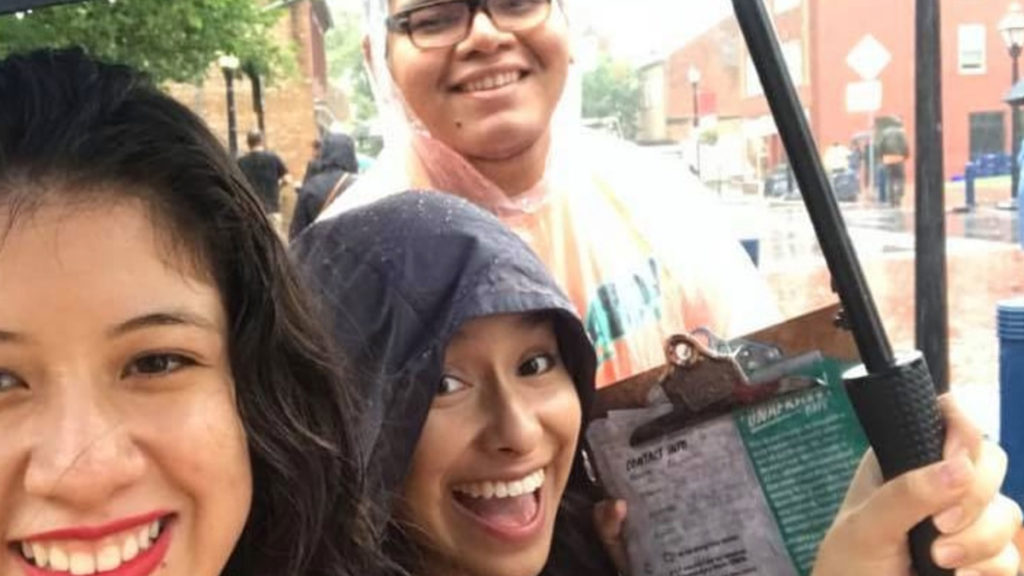
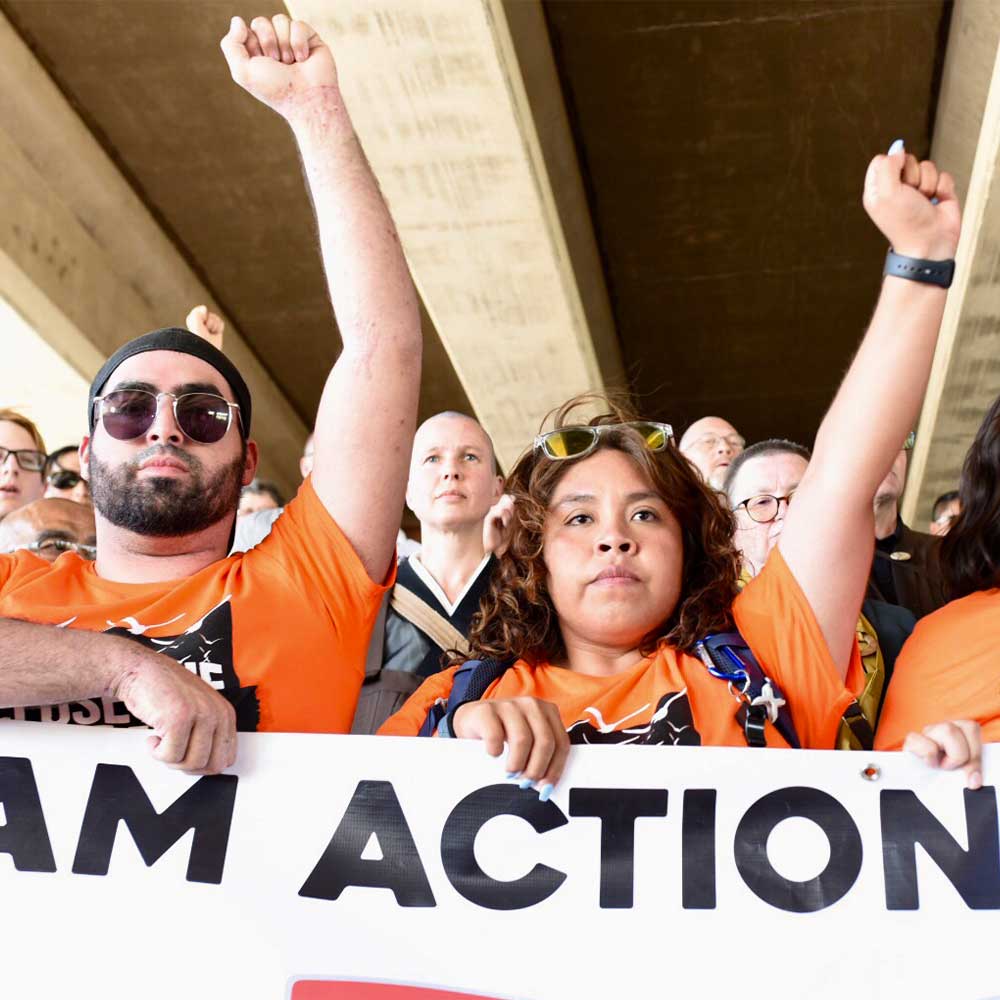
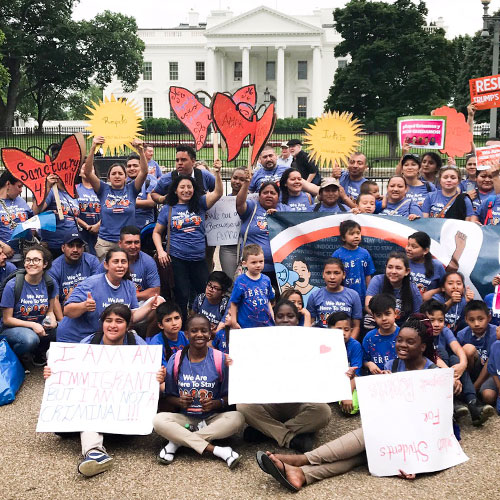
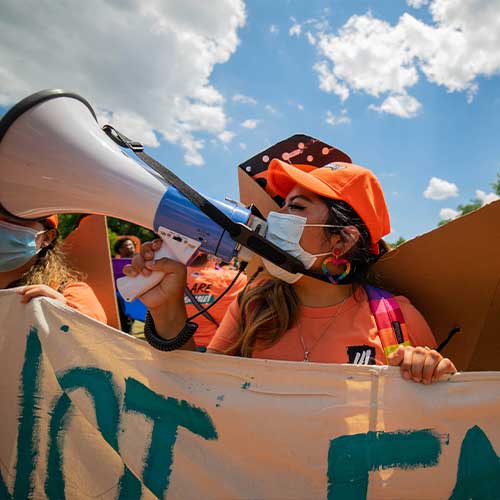
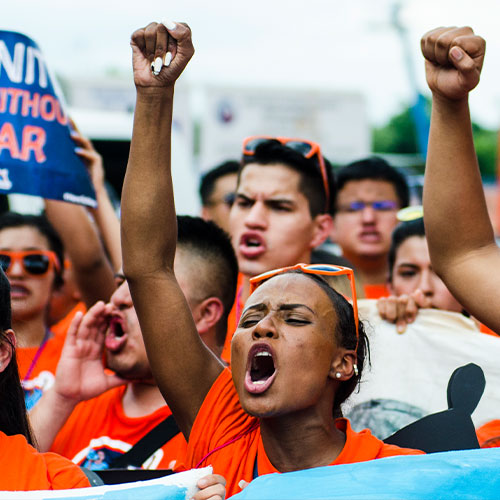
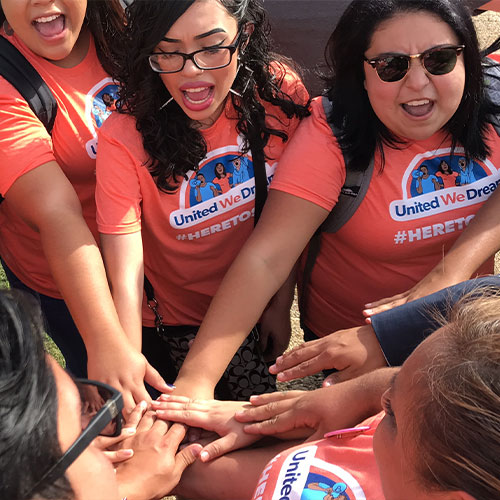
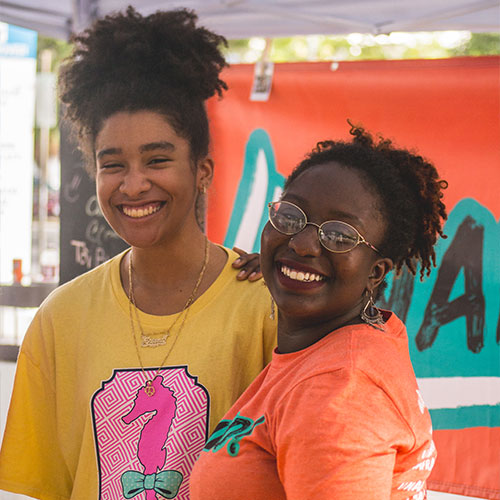
Ever since their creation, ICE and CBP have targeted, detained, abused and deported immigrants while separating loved ones and tearing apart communities. Donate 21 dollars to help us fight back against the 21 years of terror.